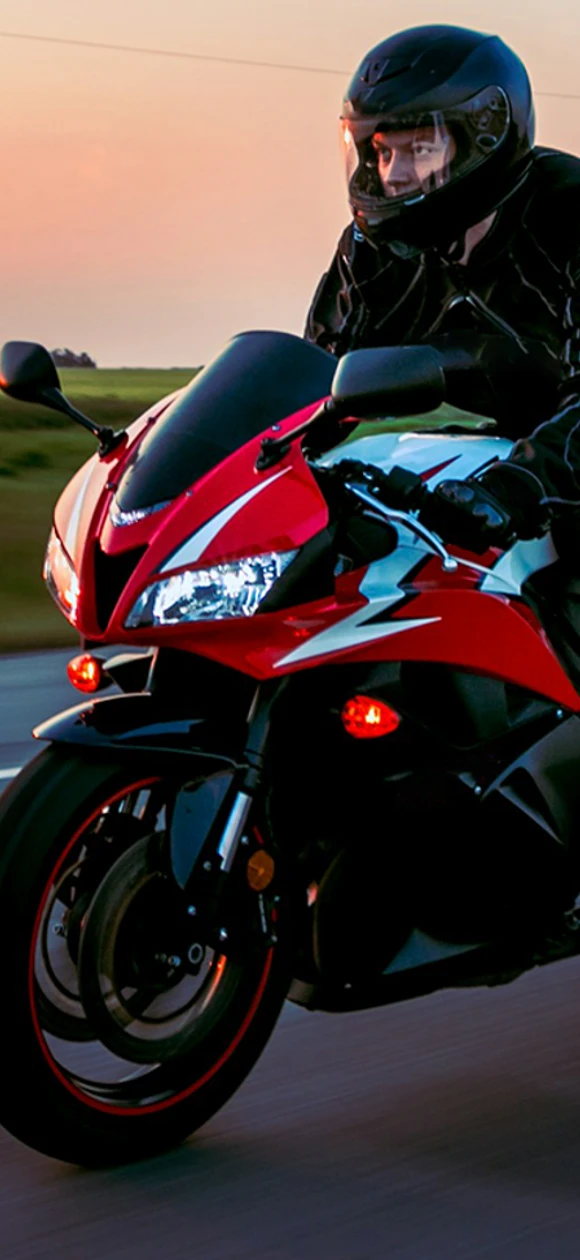
Motorbike Accidents: Failing to wear protective clothing
Sign-up to make a compensation claim today - use our quick and easy form to begin your claim for thousands in compensation.
Start Your Claim Now
Sign-up to make a compensation claim today - use our quick and easy form to begin your claim for thousands in compensation.
Start Your Claim NowBetween 1999 and 2011, the British police reportedly recorded over 3 million casualties in Great Britain. Over this 12 year span, 36,000 people reportedly died, and another 370,000 were seriously injured on the roads.
And these are just the statistics of incidents that were reported…
Although motorcyclists only account for around 1% of road traffic users, a shocking 21% of recorded fatalities are motorcyclists. During that 12-year span, over 7,000 bikers and their passengers have reportedly died in road traffic incidents, which puts the casualty rate at 1,659 killed and seriously injured motorcyclists per billion miles travelled.
So, because of this, the importance of wearing protective clothing is invaluable.
Protective clothing is absolutely vital for motorcycle riders. After all, motorcyclists are sharing roads with cars, vans, and trucks that all have strong metal exteriors to protect the drivers. With a casualty rate at 61 times higher than cars, motorcyclists need to do everything they can to minimise both the risk and impact of injury on the roads.
In Thailand, it was recently reported that the number one cause of death was motorcycle fatalities, and one of the main reasons for this was that people were reportedly not wearing helmets.
It’s a legal requirement for motorcyclists to wear hard helmets when on the roads in the UK, and it’s not difficult to see why. The brain and skull must be protected as any damage can cause significant and permanent damage, or even death.
But the importance of other protective gear that motorcyclists are also instructed to wear should never be ignored. Such as:
We just can’t say it enough: “Wearing protective gear is extremely important and must not be neglected“.
During a collision, it is the only thing standing between the biker and the fast approaching tarmac roads, or the unforgiving exterior of a vehicle.
There are all sorts of videos online that show the impact of wearing a helmet compared to without. Do a simple search on YouTube and there are plenty of videos showing the impact blunt force can do to a helmet.
Pictures of the aftermath of a collision between a car and motorcycle will usually show a significantly damaged motorbike next to a car with just a dent or just some minor damage. The driver of the car may likely have escaped with minor soft tissue damage, but the motorcyclist is usually not so lucky.
In terms of other bodily injuries for riders, even the smallest of impacts will likely result in a bruise and/or cuts and scrapes. On the roads, there is potential for a lot of damage to be caused, so motorcyclists must protect their themselves in every way possible. Wearing padded and protective clothing can reduce the damage caused, and even save a life.
The Highway Code is full of warnings, instructions, and recommendations that will help rider practice safe riding. The more people who adhere to the rules, the safer the roads. Within the Highway Code, there are instructions for drivers to look out for motorcyclists and to recognise the high risk of casualty too, of course.
But motorcyclists also have a responsibility to make sure they look after themselves.
Motorcyclists must make sure that they minimise any risk of harm and the impact of injuries should any accidents occur. In the eyes of the law, injured motorcyclists may be penalised for not wearing appropriate protective gear if that gear could have reduced or removed any injuries sustained.
Of course, if the accident was the fault of another driver, then the other driver should be held responsible and likely to pay damages. But if a motorcyclist who didn’t wear a helmet was knocked off his / her motorbike and hit their head, it’s easy to see that any head injures the motorcyclist suffers can be worse if they fail to wear a helmet.
This is usually called contributory negligence. Whilst the law should help you recover a remedy if you suffer an injury caused by someone else, the law may also look to see if you had a part to play in your own injury. Do make sure you can’t be held responsible or partly responsible for an accident or injuries suffered, as this can lead to reductions in compensation payouts.
For example, a rider who fails to wear a helmet and sustains head injuries may lose up to 25% of the value of their claim for contributory negligence.
Wearing protective gear may be a little uncomfortable but it is a small price to pay to reduce risk of casualties and death.
